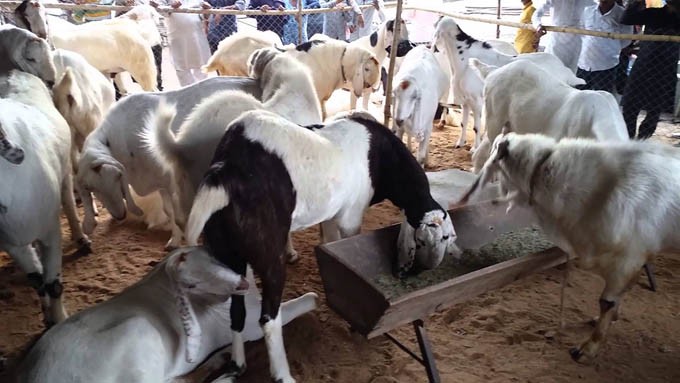
There is an urgent need to devise a national policy on infectious diseases to counter the threat of Congo virus as Eidul Azha approaches

Congo fever has once again reared its ugly head, taking lives of five people so far this year. Among them are Nadia, a student nurse, hailing from Lodhran, who died on July 17 and Dr Sagheer Sameejah, a senior medical practitioner, who operated upon Nadia before passing away.
A tick-borne disease transferred from infected animals to humans, Crimean-Congo Haemorrhagic Fever (CCHF) virus, known as Congo fever, is an endemic virus with fatality rate up to 50 per cent. The disease emerges from arid areas in Southern Punjab, some parts of Sindh, Balochistan and KP, where livestock are raised. Its prevalence rate increases ahead of Eidul Azha, when sheep, goat, cows, bulls and camels are transported in huge numbers from one place to another for sacrificial purposes. But instead of taking CCHF virus seriously, every year, the government merely takes a few routine measures to prevent its outbreak.
Last year, the death toll reported in KP alone was 24.
Dr Salman, Secretary Information, Young Doctors Association (YDA) Pakistan, associated with Lahore’s Mayo Hospital, says various viruses like Bird Flu, Ebola, Dengue and Congo have hit Pakistan. "The sooner we make a national policy on infectious diseases, the better."
The government reactivated Punjab Endemic Disease Act 1958 and introduced Dengue Epidemic Control Regulations 2011 after the outbreak of Dengue fever that killed more than 300 people in 2011. "Perhaps, the policymakers will come out of their deep slumber after Congo fever spreads widely and death toll rises," says PML-Q Senator Kamil Ali Agha.
Congo virus is transmitted through infected livestock. Close contact with blood, secretions, organs or other bodily fluids of infected persons can cause infection. Surprisingly, Congo virus infects animals but never kills them. However, it may kill an infected human. There is no vaccine yet to cure either people or animals. It is widespread in Africa, Balkans, Middle East and Asia.
According to the Journal of Global Infectious Diseases (JGID) published in 2015, CCHF virus is the most extensive tick-borne viruses that affect human health, and the second most widespread of all medically important arboviruses, after Dengue virus. "Since its discovery in 1967, nearly 140 outbreaks involving more than 5,000 cases have been reported all over the world. A total of 52 countries have been recognised as endemic or potentially endemic regions, reporting substantial number of cases every year."
In the absence of screening facility at most of the entry and exit points across the country, there are fears that thousands of sacrificial animals infected by Congo virus have been plaguing animal markets and farms.
Muhammad Rafiq, Secretary General, Cattle Owners Association, says that we are trying to keep animals clean by washing them daily besides spraying them to prevent Congo virus.
Given the situation, "prevention is cure", says Akhlaq Ahmed, Spokesperson, Health Department. "Before buying sacrificial animal, examine folds and areas with thick hair carefully for ticks and marks of stings," he suggests, and adds that the animal should be examined in sunlight in cattle markets.
"Since no vaccination has been discovered so far to treat the virus, the department is creating awareness of the risk factors and educating people about the measures they can take to reduce exposure to the virus," he says.
"The department directs to wear gloves and other protective clothing while handling animals or their tissues in endemic areas, notably during slaughtering, butchering and culling procedures in slaughterhouses or at home, quarantine animals before they enter slaughterhouses or treat animals with pesticides two weeks prior to slaughter," he says.
Standard practices need to be defined and pronounced for healthcare workers caring for patients with suspected or confirmed CCHF or handling specimens from them. "These include basic hand hygiene, use of personal protective equipment, safe injection practices and safe burial practices," he adds.
Dr Malik Nawaz, Director (Animal disease reporting & surveillance), Punjab Livestock and Dairy Development, dispels the impression that cattle markets are being flooded with tick-affected sacrificial animals. "Our designated teams at all entry and exit points of the province, equipped with advance paraphernalia, have been filtering and clearing animals. The department has SOPs to vaccinate and spray animals all year round, especially during the muggy season which suits tick’s growth."
Muhammad Mehdi, Media Coordinator, PML-N, says that the government has converted most of Dengue isolation wards into Congo isolation wards with immediate effect. "All suspected patients -- 2 from Mayo, 1 from Services and 2 from Holy Family Hospital have been quarantined and cleared so far."
In collaboration with other relevant departments, Pakistan Institute of Medical Sciences (PIMS) has also come forward and made special arrangements to fight against Congo fever, he adds.
Despite all odds, he claims, the government is planning to devise infection control policy with more training to healthcare workers.
CCHF was first reported in Pakistan in 1976. But there has been a dramatic rise since 2000 with 50-60 cases being reported annually. The incidence of CCHF peaks in June and October but random cases are reported throughout the year.